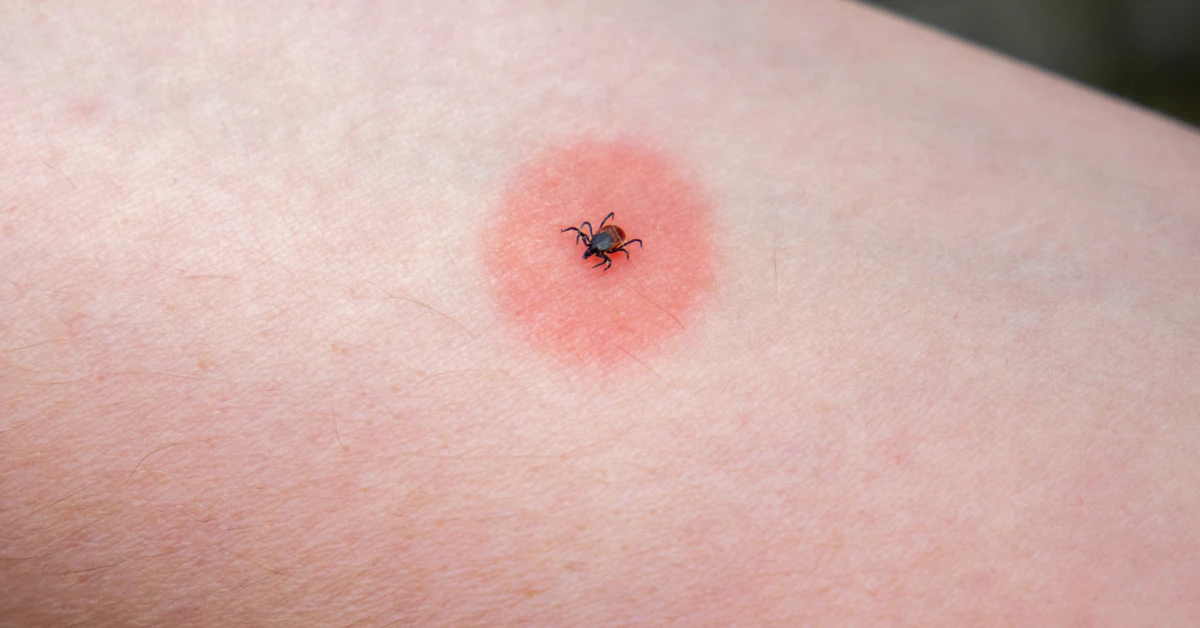Here’s the deal: Ticks love warm weather. And this summer, they’re hitting harder than ever.
According to the CDC, emergency rooms across the country are seeing a surge in visits for tick bites, especially from children and older adults. Yeah, I know, leaves you asking: “What gives? Ticks were always a nuisance. A REAL messy one this year?”
Personal Protection
We get it. You don’t want to be the next case study in some tick report. Sure, prevention isn’t foolproof, but it is the best shot you’ve got.
Use repellent on skin and clothes
Good tick break-in prevention starts with what you put on your body (or on it, anyway).
Both skin and clothing repellents work—just with different chemicals. For your skin, stick with one of these for the best results:
- 20-30% DEET (the ol’ school gold standard)
- 10-20% Picaridin (smells less industrial, just as effective)
- 30-40% oil of lemon eucalyptus (skip if you’ve got little ones under 3)
Permethrin is the secret weapon for clothes. Socks, shirts, even mowed gear—spray once and it’s good through a couple washes. Just. Never. Put it on skin. That’s not how it works.
Pro tip: Parents, this part ain’t for guessing. Apply repellent to kids with care and watch the face area like a hawk.
Dress for tick survival
Outfit-building time. Just because it’s warm doesn’t mean you have to armor up like you’re storming a tick castle
Stick to these:
- Long sleeves. Lightweight ones. Summer’s not the time to sweat through a coat. Look for thin, tightly woven material.
- Long pants. Tucked into socks. Not the most fashion-forward; best way to keep ticks on the outside not underneath. Ever seen a tick crawl up your leg unnoticed? Not fun.
- SECURE sock-to-shoe entry points. Gotta tape ’em at the bottom? Do it. Yeah, looks silly. Works like a charm.
And colors? Light tones are your ticket. Makes ticks easier to spot before they get too cozy. Think muddy brown shirts when navigating a tick zone in those woods.
Avoid direct contact in tick zones
Ticks don’t fly.
They don’t jump.
They just stand on tall grasses, brush, or leaf litter… waiting for you to walk through so they can climb aboard. Gross.
So how to avoid this sticky situation?
- Walk the middle of trails
- Don’t brush past the greenery
- Stay clear of overgrown, shadowy areas
Your tick checks: detailed and deliberate
Once indoors, the job’s not done. After every hike, play session in the yard, or outdoor event, it’s time to comb through your body and gear.
Talk about a personal connection—a family friend learned this the hard way. She found a tick behind her knee after her daughter complained of a weird itch. Had they done a quick tick checklist that night… she wouldn’t have needed an ER visit. Learn from this smooth move—and become your own little tick radar.
Do full body checks… daily!
When in tick country, checking your body becomes the new hygiene ritual. What’s that? You’re cleaning? Same idea. A tick-free one.
Check yourself daily after being outdoors—yeah, even if it was just some running around in the backyard or a fast check. Ticks don’t care if you’re halfway into a walk, they’ll latch on just the same.
Focus here:
- Armpits
- Behind the knees
- Scalp
- Inside the ears
- Belly button
- Groin
Prioritize privacy if kids are involved. Trust me: it’s weird to check your child’s head in front of others, but infinitely easier than dealing with any weird reaction later.
Pets and gear: tick wardens
If you’ve got a pup or cat that likes sniffing around the yard, odds are you’re coming home with tiny squatters. You’ll need a strategy for that.
Check pets obsessively after playing outside. Especially around the neck, armpits, belly and ears—ticks love dark, moist places. Their favorite hideaways? Same can be said for your backpack, daypacks, or hats.
Tip straight from the EPA: use vet-approved preventative treatments for animals. Can’t emphasize this enough—for boy and beast alike, it’s a gamechanger.
Showers help… your own tick alert
Facts are facts. Water and soap within 2 hours kills ticks before they move indoors. And believe it or not, it really helps send any unhatched ones down the drain.
PS—it’s the perfect moment for a self-guided body scan. Bring a hand mirror and look around those tick zones no one thinks about: behind the ears, under your belly button, etc.
How to kill ticks on clothes
Sometimes ticks make it inside, unnoticed. Lucky for us, heat’s their worst enemy.
Guess how? Just a few minutes (like 10) in the dryer on high heat takes care of those tick hitchhikers. If it’s only damp or wet clothes, drying for 60 minutes gets the job done. No dishwasher needed, just combat power heat.
Still got laundry to do? Toss with hot water at the wash to keep ticks from escaping the spin cycle alive. Cold and medium temps… not gonna cut it.
Tick removal dos and dont’s
Deep breath—these ticks are attachers
Finding an uninvited guest on your skin? Deep breath. Stay calm, but swift.
Two little rules:
- Avoid panic like the plague
- (But) get that tick off ASAP
This is where things get real: stress can push you to try shortcuts—match head, alcohol, or petroleum jelly. Not just useless… they might speed up germs if a tick’s got something brewing inside.
Let’s walk through the right tick removal method
- Grab fine-tipped tweezers
- Get as close to the skin as possible
- Pull upward steadily—no twisting or squishing allowed
- Wash and moisturize with antiseptic
- Dispose of tick safely—tape it up, toss in sealed bag
What if the tick breaks apart? Extract what you can—if pieces remain, watch for irritation. They’ll usually come out on their own. Either way, don’t panic. Instead watch… and record implications.
Do not: mess with fire or home cures
So many tick myths surface with a resoundig(ing) “no.”
Suggestions floating around:
- Heat from a cigarette tip to pop the tick off (no, don’t
- Smother a tick with Vaseline (they don’t suffocate)
- Alcohol or after shave (see above—does nothing but irritate tick more).
Doctor’s advice? These don’t help. You’re just making the situation weird and meddling with tick delivery service.
Always go for a sterile tool to remove the tick—no shortcuts, even during a stressful moment.
After removal: Monitor signs
Tick gone, but red flag not gone. Wait for signals… especially within those first few days and weeks.
Look for these tick bite symptoms (per CDC):
- …a bullseye or expanding red rash
- Fever
- Nausea
- Headache
- Muscle or joint pain
Had fever or that telltale ‘bulls-eye’ in the weeks after a tick bite? Don’t hesitate—get to the ER. Those are signs your bite may have passed along Lyme disease or another tick-borne infection.
Using repellents without squeezing panic
Repellent decisions can feel risky, especially when it comes to kids. Especially with claims like, “DEET is dangerous,” or, “Permethrin does more harm than good.”
Misinformation? Real-world experts (not just a TikTok trend) say DEET and permethrin, when used correctly, are your best options.
Onto skin? DEET gives you hours of protection. Into gear? Permethrin coatings on clothing or accessories are safe and last weeks.
In other words:
- Read the label like it’s your college textbook. Adhere to the instructions.
- Parents, follow protocols. Avoid spraying directly on hands of young kids.
- Check concentration as bulletproof prevention (20-30% DEET max for skin)
Don’t skip the health warnings, but don’t let paranoia stop your family from being outside either. Prevention’s about balance, not totally shutting down adventures.
The hidden threats of tick-borne diseases
How ticks deliver more than just a broken lunch
So it’s common to hear, “Well, a tick bite isn’t always dangerous,” and you’re right, but risk only builds when ticks are infected.
One CDC finding: ticks themselves can’t carry illness until they bite an infected host like a mouse. And you can’t always tell if a tick’s infected by size or bite sting.
So—never assume harmlessness. That’s why prevention counts and why even removal takes strategy. Lyme disease is just one stop on this sad train of tick-borne illnesses.
Other residents on the list though less famous:
- Ehrlichiosis — flu-like, but not flu. Fever. Fatigue. Nausea. Hidden.
- Anaplasmosis — like ehrlichiosis, same symptoms, similar but different cause (seriously, check with doctors if any tick-related ill feelings go undiagnosed)
- Rocky Mountain spotted fever — tick fever transmitted by Rocky Mountain wood ticks and dog ticks
- Babesiosis — impacts Red blood cells. Can lie dormant. News of late: it’s sneaky.
You may not be aware of all these—but you’ll feel it if you catch one without a early alert. That’s why checking for symptoms regularly helps… like having a health early warning system built into your summer routines..
Bullseye rash isn’t Hollywood myth
Yes, that bullseye rash—technically called erythema migrans—is your body’s first real confirmation of Lyme disease. But not everyone gets the bullseye.
I once met someone who felt a long flu coming on and later found out it was Babesiosis. The rash came later. Penicillin had zero effect. It took interrogation by their doctor (and a blood test) to figure out the issue was tick-related. If someone had ill symptoms for weeks since a recent return from hiking, maybe a tick check would have helped avoid all the stress.
Learn from their story. If nothing else happens after a tick bite—you’re golden.
Murky rash, tick symptom flares in weeks? Dial medical. Faster you do, better the outcome.
High-risk groups… because it might not be you
Here’s the rub: ER visits aren’t screening everyone equally. Families with kids and older adults are clocking in thanks to tick bites way more than usual.
So why them, not always you?
Kids don’t always check themselves. Ticks in the playground? A reality. And they can climb onto your kids and get embedded where parents don’t look as often: back of the necks, scalps. A simple shirt zipping sound or playground grass tag can take a day from awesome to embedded and unnoticed.
Older people might be more right-shifted in their energy. Old woodpiles in the yard, campfire knot logs—they’re checking gear but not under hats or on calves, as often as younger generations. Same story applies to them as well. If you’re over 60 and spending time in rural zones or in parks—you’re top tick target. Enter the tick zone once, and you might be another CDC data point.


















Leave a Reply
You must be logged in to post a comment.